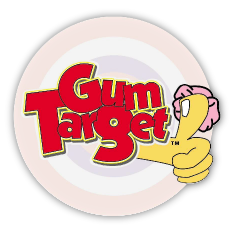Adapting to consumer trends is not just a matter of keeping pace with the market — it’s a thorough recalibration of what a brand offers and how it communicates with its customer base. For chewing gum brands, this has meant recognizing and aligning with the wellness movement that has swept through consumer behavior in recent years. The current health and fitness surge has led to consumers becoming more discerning about the ingredients in their food and the products they consume daily. In this light, several gum brands have revisited their ingredient lists, reducing or eliminating sugar and artificial components in favor of xylitol, stevia, and other natural sweeteners that provide the dual benefit of a sweet taste and lower calorie content.
Chewing gum, classically used as a breath freshener or idle pastime, has been recast as an adjunct to an active, healthy lifestyle. Brands highlight the role of their products in dental care, promoting gum as a means to clean teeth after meals, protect enamel, and neutralize acid that can lead to decay. By offering products that contain dental-friendly ingredients, brands have found favor with not just the health-conscious consumer but also with the dental profession; a commendation from which can act as an influential endorsement.
In a market that favors ethical consumerism, the companies behind these brands have also had to consider the lifecycle of their products from production to disposal. Biodegradable packaging is more than an environmental statement; it is a signal to the consumer that a brand shares and acts upon its values. As packaging hits the shelves showcasing recycled materials or even seeds for planting, it’s clear that gum brands understand the pressing need to reduce their carbon footprint, and they have chosen to view this challenge as an opportunity for innovation and differentiation.
 Variety and novelty play critical roles in staying abreast of market trends. Consumers often seek diversity in their choices, prompting brands to offer a broader range of flavors, textures, and even functional benefits such as added vitamins or caffeine for energy. The rise of fusion flavors and culturally inspired variations cater to adventurous palates and can generate buzz as consumers seek out new experiences in familiar formats.
Variety and novelty play critical roles in staying abreast of market trends. Consumers often seek diversity in their choices, prompting brands to offer a broader range of flavors, textures, and even functional benefits such as added vitamins or caffeine for energy. The rise of fusion flavors and culturally inspired variations cater to adventurous palates and can generate buzz as consumers seek out new experiences in familiar formats.
Consumer trends also point towards personalized experiences and genuine engagement with brands, resulting in a seismic shift in marketing strategies. No longer are broad, one-size-fits-all campaigns sufficient; instead, brands are required to hone in on individual preferences, tailor communications, and curate offerings to specific demographics. Whether through social media interactions, targeted adverts, or bespoke product offerings, the connection between brand and individual now demands a personalized approach.
As demographics shift, brands are taking note of population changes. Millennials and Gen Z, for example, are particularly discerning about brand authenticity and social impact. Chewing gum brands are responding by aligning themselves with social causes, engaging in direct dialogue with customers on platforms where those generations are most active, and being transparent about their processes, ingredients, and company ethos.
Technological Engagement and Personalization
Technological engagement and personalization have become cornerstones in modern marketing strategies, particularly for consumer goods like chewing gum, which are seeking to make a personal connection with their audience. Gum brands are deploying an array of digital tools and platforms to build relationships with tech-savvy consumers, garnering loyalty and developing a distinctive brand persona.
Social media, with its pervasive influence, is an area where gum brands are particularly active. The visually driven nature of platforms like Instagram and Twitter presents an ideal backdrop for creative campaigns that encourage consumer interaction. Brands use captivating images, humorous or thought-provoking content, and influencer partnerships to create a buzz around their products. They’re not just posting about their products; they’re creating conversations around themes that connect with the lifestyle of their consumers—such as fitness, fashion, and sustainability. These discussions foster a sense of community and shared values, setting the stage for a deeper brand connection.
Interactive websites and mobile apps go a step further, transforming the traditional gum-chewing experience into a digital adventure. Gamification is a strategy that has shown success, with brands developing games that reward users with prizes or enable them to unlock new flavors and special editions. These apps often serve a dual purpose: they entertain and engage the consumer while also collecting valuable data on consumer preferences, which can then be used to guide product development and marketing efforts.
Personalization, being the pinnacle of consumer engagement, is seeing particular innovation in the gum market. Some brands offer online platforms that allow customers to create their packaging designs or choose from a variety of limited-edition designs for special occasions. This serves to give a unique and personal touch to a product that is traditionally seen as a quick grab-and-go item. Moreover, brands often now offer the ability to mix and match flavors or even create a custom flavor profile, appealing to the desire for exclusivity and individual expression.
Artificial intelligence (AI) plays a role here as well. Technologies like machine learning can track consumer behaviors and patterns, allowing brands to recommend personalized flavor combinations or send targeted promotions that resonate with the interests of individual users. AI-driven chatbots can provide real-time assistance, answer questions, and offer recommendations, thereby enhancing the customer experience.
Bridging the gap between digital engagement and the physical world are innovative approaches such as augmented reality (AR) campaigns, which offer an immersive experience by bringing to life product packaging through smartphones and tablets. By pointing a device at a pack of gum, consumers might be taken on a virtual tour, play an AR game, or learn about the brand’s story. This blending of digital and tangible experiences serves to enrich the product’s appeal and embed the brand in the consumer’s everyday digital lifestyle.
Email marketing continues to be an effective tool as well, with gum brands utilizing newsletters to keep their products top of mind. However, gone are the days of generic mass emails; these communications are now highly segmented and personalized, filled with content tailored to the recipient’s past purchases, preferred flavors, or even the time of day they’re most likely to enjoy a piece of gum.



